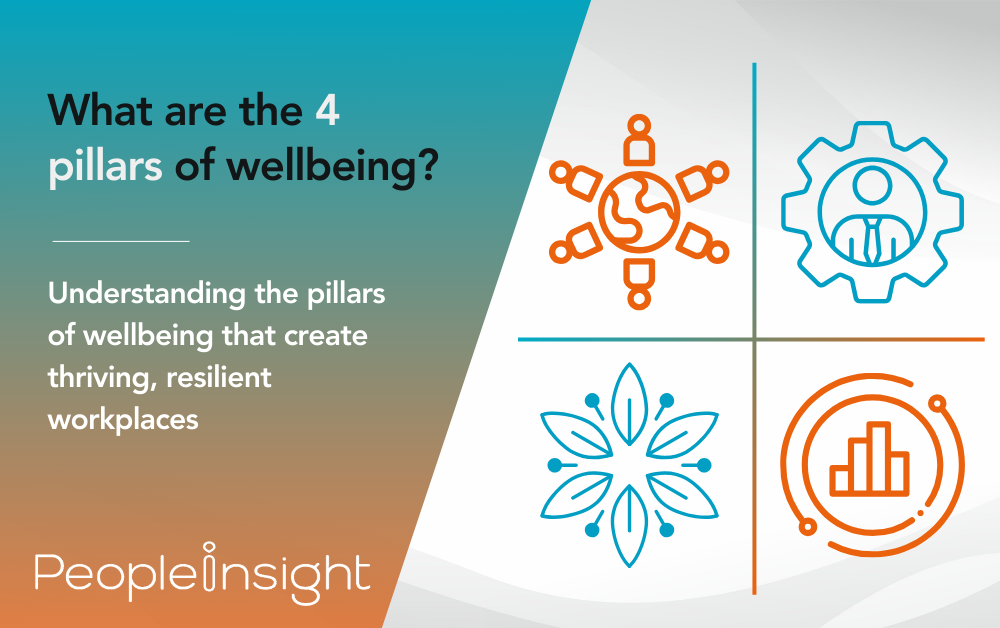
We all know that employee wellbeing is a really important part of organisational success. Yet despite growing awareness, many organisations still struggle to create meaningful wellbeing strategies that have lasting impact. We have the data to back this up. Our own benchmark data reveals that, across sectors, over one quarter (26%) of employees do not agree that their company does enough to support their health and wellbeing at work.
At People Insight, we believe that to make real progress, organisations need to take a comprehensive view of wellbeing. Our Thrive™ model identifies four key pillars of wellbeing that underpin a thriving workforce: holistic wellbeing, climate and culture, role and organisational processes. Understanding and strengthening these pillars can make all the difference between a workforce that is just coping and one that is truly thriving.
Related: How to build an outstanding employee wellbeing programme
The four pillars of wellbeing at work provide a framework for organisations to support employees in a meaningful and sustainable way. These pillars are interconnected and impact every part of the employee experience.
Let us explore each one in detail.
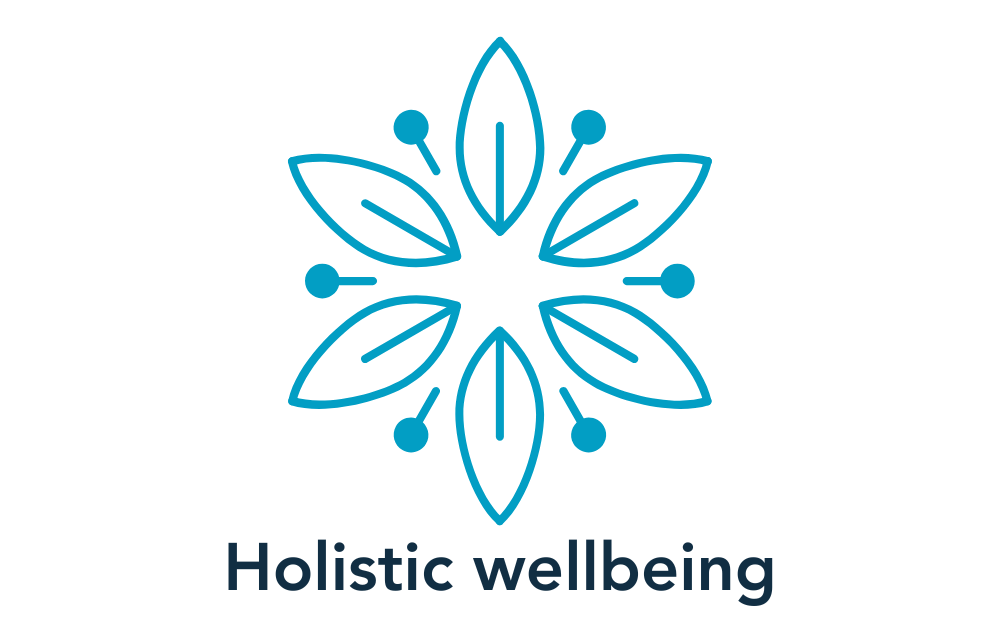
Holistic wellbeing recognises that people’s experiences at work are shaped by much more than what happens between 9 and 5. It brings together financial, social, mental, physical, environmental and professional elements to provide a complete picture of employee wellbeing.
Financial pressures, for example, are a leading cause of stress in the UK. Research by the Money and Pensions Service found that over 11 million people in the UK have less than £100 in savings. The pressure and strain this puts on people can be profound — after all, if an unexpected expense comes in, you have no wriggle room.
Offering financial education, salary sacrifice schemes, or access to independent financial advice can make a significant difference to employees’ mental health and resilience.
Mental and physical wellbeing are equally important. Organisations that promote regular physical activity — whether through subsidised gym memberships, active commuting schemes, or on-site classes — see real benefits. Mental health support, including access to counselling and mental health first aiders, should be integrated into day-to-day practice rather than treated as an add-on.
Social wellbeing also plays a major role. People are wired for connection, and feeling part of a community at work reduces isolation and improves engagement. Facilitating social opportunities, supporting employee networks, and celebrating achievements all contribute to stronger bonds across teams.
Incorporating environmental and professional aspects — such as creating comfortable, inclusive workspaces and offering career development opportunities — rounds out the holistic approach. Focusing on this pillar of wellbeing helps organisations meet the diverse needs of their workforce and promote overall resilience.
Related: 7 Ways to support employee financial wellbeing
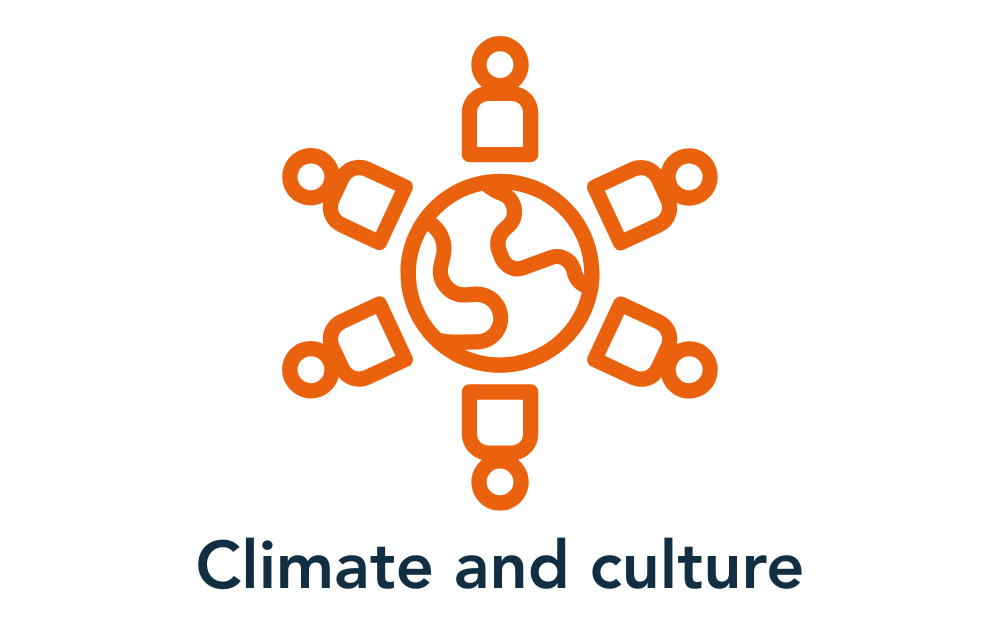
The second pillar of wellbeing is climate and culture — the unwritten rules, behaviours and relationships that shape the workplace environment. A positive organisational culture, where fairness, respect and shared values are present, acts as a protective factor for employee wellbeing.
Poor relationships at work can have a real cost. According to the British Red Cross, nearly half of workers feel lonely some of the time. Toxic cultures contribute to higher turnover, lower productivity and greater incidences of burnout. In contrast, organisations that actively promote fairness, transparency and inclusivity see stronger loyalty and better performance.
Employees who feel valued and included are more likely to engage meaningfully with their work and colleagues. Embedding wellbeing into leadership behaviours, and not just policies, is key. Managers who are trained to spot signs of distress, have regular meaningful check-ins and model healthy work habits contribute significantly to a culture of wellbeing.
Moreover, a culture that supports wellbeing sends a clear signal to employees that their health and happiness are priorities, not afterthoughts. This pillar of wellbeing is fundamental to creating an environment where people can flourish.
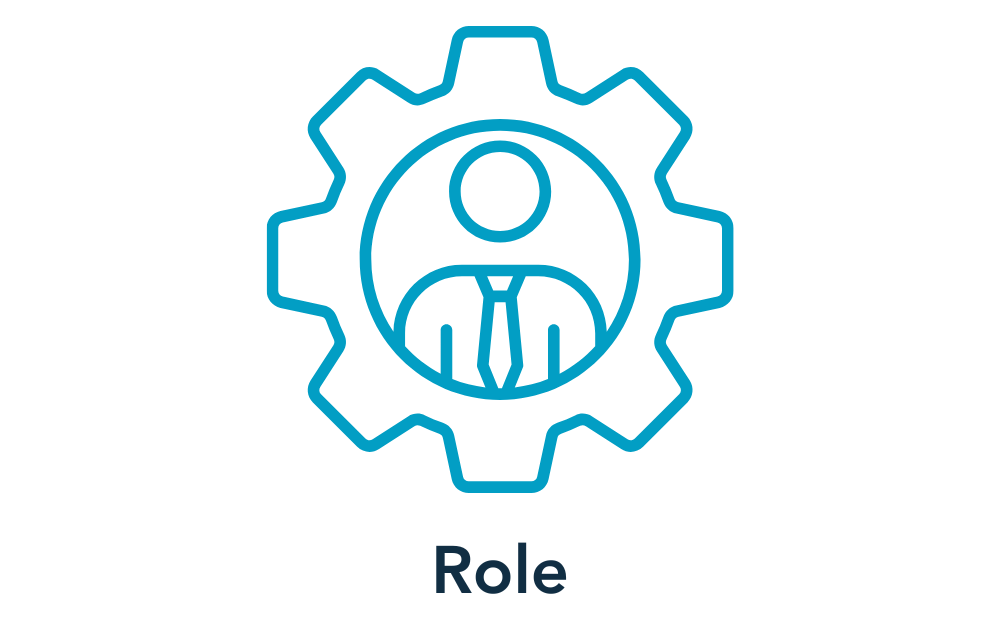
The third pillar of wellbeing focuses on the role that employees carry out every day. Role clarity, autonomy and manageable workloads are important elements of employee engagement.
Lack of role clarity can lead to confusion, stress and conflict. Employees need to understand what is expected of them and how their work contributes to broader goals. According to the Health and Safety Executive (HSE), workload pressures and role uncertainty are two of the most common causes of work-related stress in the UK.
Autonomy — having control over how one’s work is carried out — is another important factor. Research consistently shows that employees who have more control over their work tend to have better mental health outcomes. Encouraging flexible working, giving employees a voice in decision-making, and trusting people to manage their time and responsibilities all support this pillar of wellbeing.
Workload management is also critical. Long hours and unmanageable demands can quickly erode wellbeing. Open conversations about priorities, regular workload reviews and practical support in busy periods help keep pressures in check and signal that employees’ wellbeing matters.
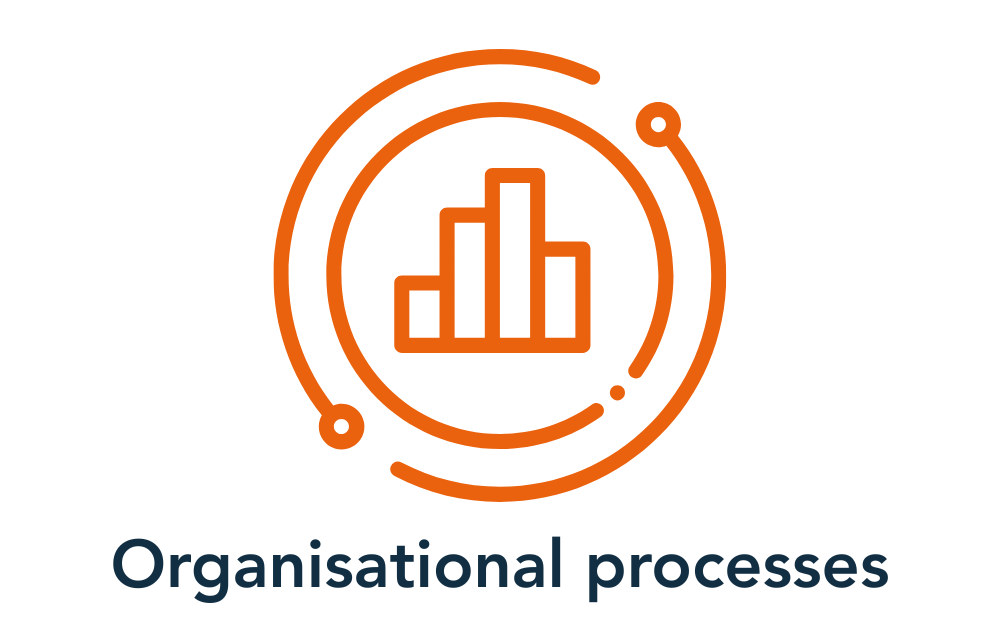
The fourth pillar of wellbeing looks at the systems and processes that support employees behind the scenes. Health and wellbeing initiatives, support structures and change management all fall under this area.
It is not enough to have a suite of wellbeing initiatives if they are poorly communicated or inaccessible. Processes should be designed with employees’ needs in mind, and feedback should be sought regularly to keep support relevant and effective.
Support systems could include confidential Employee Assistance Programmes (EAPs), occupational health services and wellbeing champions. However, visibility and genuine promotion of these services are just as important as their existence.
Managing change carefully is also a major part of this pillar. Uncertainty can severely impact wellbeing. Employees who feel poorly informed about organisational change are more likely to experience stress and anxiety. Keeping communication open, transparent and empathetic during periods of organisational change can make a significant difference to employee trust and resilience.
When organisations invest in these pillars of wellbeing, the benefits are far-reaching for employees and for the business alike.
At People Insight, our staff wellbeing surveys are designed to measure these key areas, providing clear, actionable insights that support genuine improvements. If you would like to learn how an employee wellbeing survey can help strengthen the pillars of wellbeing in your organisation, get in touch with us today for your free, book a no-obligation demo of our survey platform.
